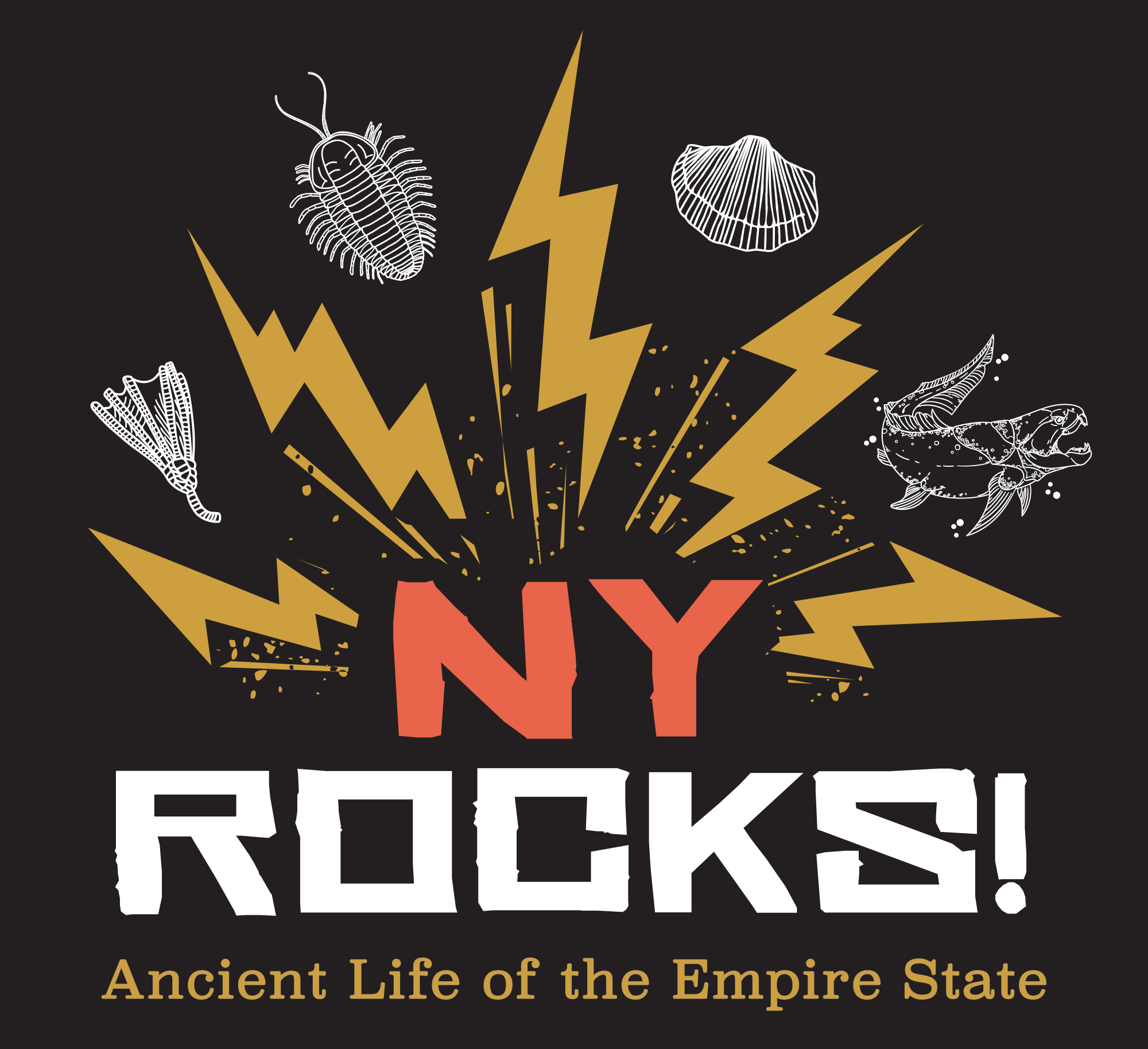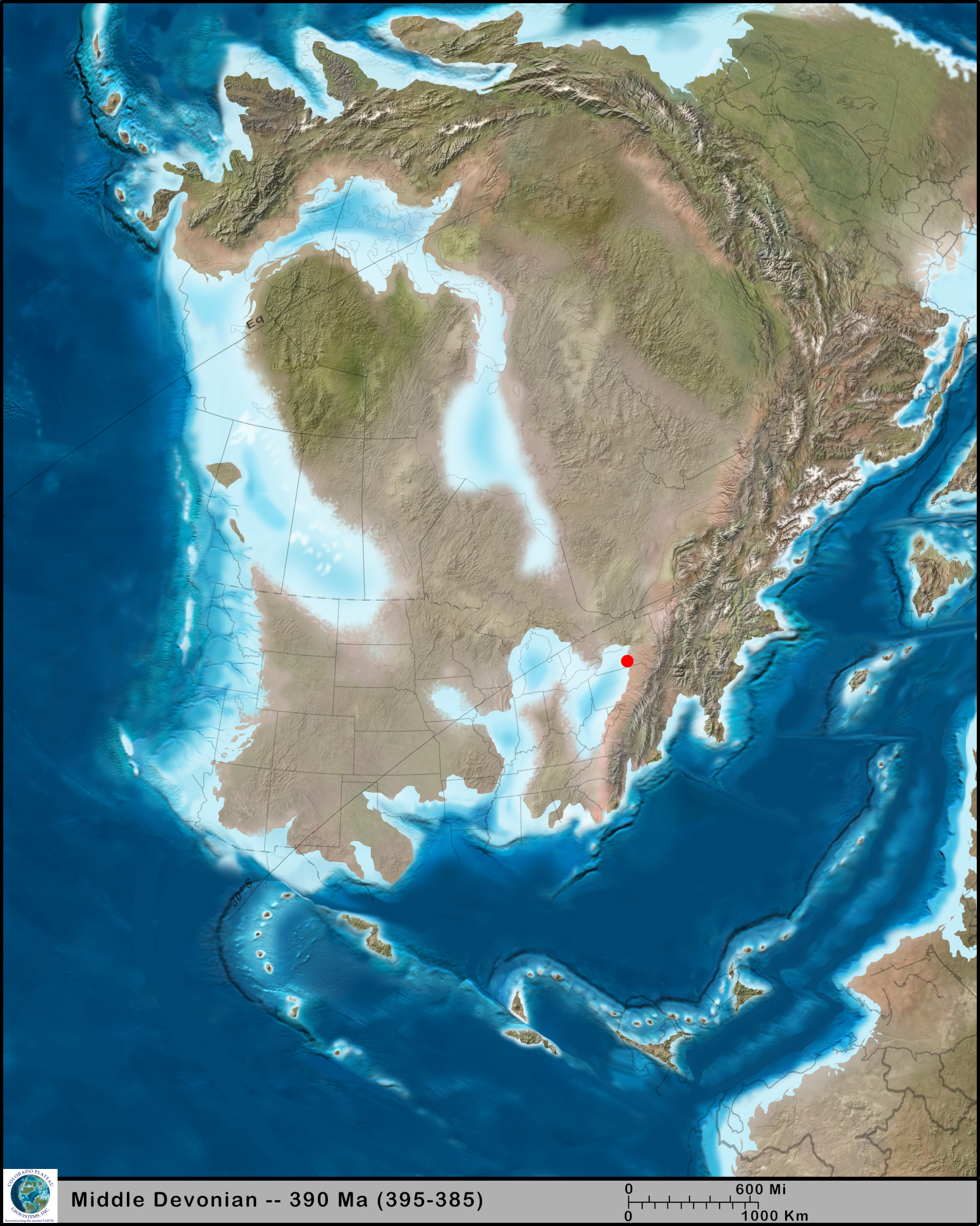Introduction
This online exhibit is based on the NY Rocks! Ancient Life of the Empire State exhibit in the Museum of the Earth.
This exhibit offers an opportunity for the public to learn about New York's rich fossil record from the Devonian Period and the Paleontological Research Institution’s expansive collection.
NY Rocks!: Ancient Life of the Empire State introduces visitors to the ancient world and life of the Devonian Period, and show how the Earth’s history of 385 million years ago continues to impact our world today. Visitors will learn more about how Devonian rocks have been used for building stone, how Devonian bedrock affects wine production in the Finger Lakes, and how regional tourism relates to Earth history events. In addition, the exhibit will also introduce some of the people who have studied the Devonian of New York and how large, “behind the scenes” museum collections are used to make sense of the Earth’s history.
Acknowledgments
This exhibit was developed with support from the Tompkins County Tourism Program, Tompkins Community Bank, Boundary Breaks Vineyard, Anthony Road Wine Company, and Wagner Vineyards.
The Devonian Period
Ithaca, where PRI and the Museum of the Earth is located, was vastly different 385 million years ago during the Devonian Period. Long before the dinosaurs, an ancient ocean covered what is now New York State. The warm, shallow water was filled with creatures that are now extinct. You can find fossils of extinct creatures in our local rocks that you won’t find in modern seas, such as trilobites, brachiopods, corals, and many others. Nowhere else on Earth is the Devonian exposed at a comparable geographic extent. Because of this, scientists come to Upstate New York to uncover clues about ancient climates and biodiversity. Our land’s shape, rock layers, and composition tell the story of New York during the Devonian.
The Age of Fishes
The Devonian Period (419–359 million years ago) marks the middle of the Paleozoic Era, the time of “ancient life.” Because fish life rapidly diversified in the ocean during the Devonian, it is sometimes called “The Age of Fishes.” One of these fish was the massive armored predator Dunkleosteus, which may have reached over 20 feet in length and sliced its prey with powerful, blade-like jaws. While fishes thrived in the sea, early plants, insects, and backboned animals were evolving on land. Fossil tree stumps found in what are now the Catskill Mountains of New York record some of the earliest forests. The first four-legged vertebrates, or “tetrapods,” also evolved during the Devonian Period. All modern amphibians, reptiles, birds, and mammals are the evolutionary descendants of these first amphibians.
Moving Mountains: Where Devonian Rocks Formed
During the Devonian, Earth looked very different from today’s world. The continents were in different places, some broken into smaller pieces. The land we know as western New York was near the equator, mostly covered by a shallow ocean. In eastern New York, the Acadian Mountains loomed, perhaps as tall as the Himalayas. Sediments that eroded and were transported westward from these ancient mountains formed the Devonian sedimentary bedrock of Upstate New York.
Paleogeographic map of North America during the Devonian Period. The red dot approximates the position of Ithaca. Map created by Ronald Blakey (Deep Time Maps) and used with permission.
Portrait of James Hall.
New York: The Bedrock of Geology
The study of geology in America has its roots in New York State and the Devonian Period. James Hall (1811–1898), the first state paleontologist of New York, was one of the most influential American scientists of the 19th century. Hall described and illustrated hundreds of Devonian fossil species from New York. He published over a thousand scientific reports, including the monumental Paleontology of New York. Generations of paleontologists and geologists have devoted their lives to studying our local rocks and fossils. To this day, we are finding new insights into this ancient world.
What Can We Learn?
Collecting Devonian fossils in Hamilton County, New York (July, 2009). © PRI
This exhibit, “New York Rocks! Ancient Life of the Empire State,” will introduce you to the ancient world and life of the Devonian Period, and show you how the Earth history of 385 million years ago continues to impact our world today. You’ll learn more about how Devonian rocks have been used for building stone, how Devonian bedrock affects wine production in the Finger Lakes, and how regional tourism relates to Earth history events. You will also meet some of the people who have studied the Devonian of New York and how large “behind the scenes” museum collections are used to make sense of the Earth’s history. In addition, you can learn about where to go to explore and collect your own fossils in New York!
Stratigraphic Layers
The Language of Rocks
Most of New York’s rocks are sedimentary. They formed from layers of sand, silt, and mud. These rock layers, called strata, build up over time, with newer rocks sitting on top of older ones. This is called the Principle of Superposition.
Geologists look at the way rocks are layered, called stratigraphy, to learn how old the rocks are in relation to one another. Scientists can also figure out the ages of rocks in different places by correlating, or comparing, their physical features and the fossils they contain.
Rocks are usually named for the place where they were first studied. For example, the Tully Formation, seen at Taughannock Falls State Park, is named for Tully, New York.
How do stratigraphers know that the limestone layers at Taughannock Falls State Park and those in Tully, New York are part of the same formation and are therefore the same age? The answer is often FOSSILS!
Rock of Ages, Sands of Time
Geologists also use radiometric dating to learn when rock layers formed. Some minerals in rocks are radioactive. By measuring how radioactive a mineral within a rock sample is today, we can determine its absolute or numerical age, which indicates when the rock was first formed.
This method does not work for all rocks. Sedimentary rocks are made of countless pieces eroded from older rocks, so we can’t find their absolute age. Most Devonian rocks in New York State are sedimentary. So how do we know they formed over 359 million years ago?
Volcanic eruptions during the Devonian left layers of ash in the bedrock. By using radiometric dating to measure how old the ash beds are, we know the age of Devonian rocks between the ash layers. If an index fossil is also found between the ash beds, that identifies a timestamp for the fossil, no matter where it’s found. Absolute age dates were added to the geologic time scale using this method.
East wall of Seneca Stone Quarry. Tioga Ash Bed indicated with red text. Red line indicates the approximate position of a fault. Image courtesy of William Hecht.
Close-up of Tioga Ash Bed at Seneca Stone Quarry.
Charting the Devonian
Science is a work in progress, and scientists build upon the results of earlier generations. After many years of work, geologists have recently revised their understanding of the stratigraphy of New York State and how its layered Devonian rocks are correlated and connected across the state. The Paleontological Research Institution (PRI) will publish this correlation chart with three supporting volumes of reports in PRI’s Bulletins of American Paleontology later this year. These volumes detail the features of each major Devonian rock formation.
Did you know?
The name “Devonian” came from Devon, England, where rocks of this age were first studied.
A formation is a group of rocks with consistent physical characteristics that is extensive enough to mark on a map. Each formation looks different from the other rock layers above and below it.




















